By all means, Oniisama E, translating as Dear Brother, is unassuming in its premise. However, pegging Oniisama E as anything other than a landmark production would be short-sighted. Ikeda Rioyko’s original manga was penned in the 1970s, and yet the series moves through triggering subjects like terminal illness, suicide, incest, homosexuality, and drug use without batting an eyelid.
However, as I mentioned above, the series seems normal on first glance: Misoono Nanako enrols, with childhood friend Arikura Tomoko in tow, at the prestigious Seiran Academy. Seiran is a private all-girls’ school, a lavish western-styled campus providing education from the junior high level onwards.
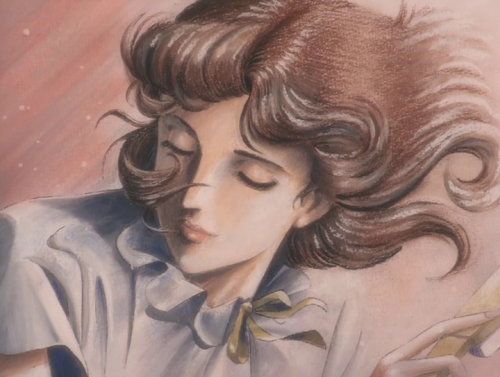
Nanako and her friend are pure and innocent, naturally. If this were any other shoujo anime, Nanako would simply be a viewer conduit for emotions; the main events of the plot are mostly none of her concern. Instead, original creator Ikeda Riyoko takes an interesting turn. Nanako narrates the events of the story through a series of letters to her Oniisama, a cram school teacher she, for reasons unknown most of the series, didn’t want to “just disappear” from her life after the cram schooling ended. The penpal situation is crucial for Nanako’s character: because of it, she transcends this role of conduit, passing her own judgement and asking her own questions of what transpires in the series.
The main events of Oniisama E‘s plot center a round a trio of upperclassmen:
The mysterious and gallant Rei Asaka, pianist and actor,
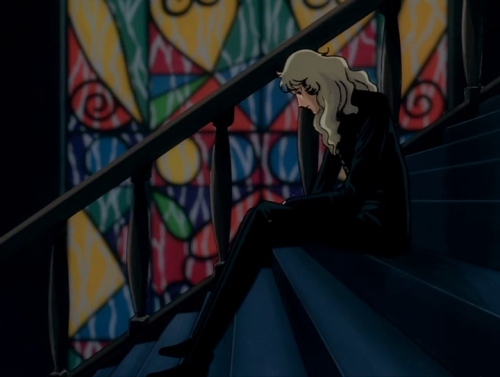
the warm and lively athlete Orihara Kaoru,
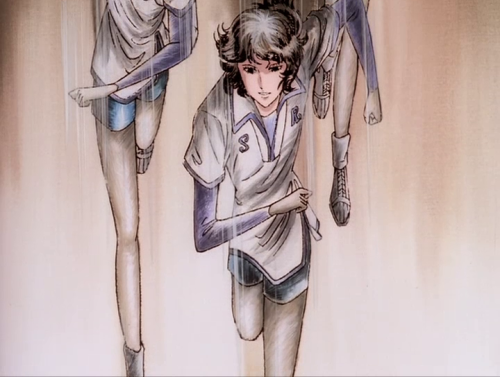
and the steely, and proud Ichinomiya Fukiko.
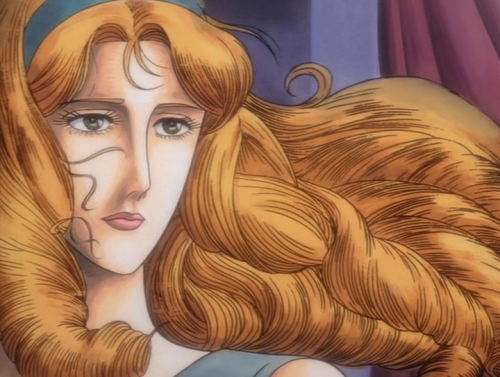
The three are idolized by the rest of the student body for their achievement in their respective areas. In particular, Fukiko, called by the girls Miya-sama, or Princess, enjoys a spot as the head of Seiran Academy’s Sorority. The Sorority is an invite-only club which doubles as a student council. Girls are chosen for the sorority typically in their first year, and are rewarded with access to all the things girls of extreme privilege are wont to have: elaborate parties, introductions to potential husbands, and opportunity in general. Competition to get into the Sorority is intensely fierce, yet newcomer Nanako manages to grab one of ten spots in the club, much to the ire of her classmates.
Once the scene is laid, Osamu Dezaki and Ikeda Rioyko go about constructing a crystal palace in for their characters, and as viewers we’re forced to wait in suspense until it shatters. Seiran Academy seems normal on the surface, but the characters’ secrets spill into its corridors. Why are the highly idolized Asaka Rei and Orihara Kaoru not in the Sorority, yet a newcomer like Nanako manages a spot easily? Why does the usually polite Fukiko actively abuse (physically and emotionally) Asaka Rei, and why was Orihara Kaoru in a hospital for a year, entering into first year high school at the same time as Nanako? What initially feels like an un-challengeable hierarchy of the three upperclassmen and the rest of the student body only reveals cracks in the crystal which threaten the seeming tranquility of the campus at every inspection.
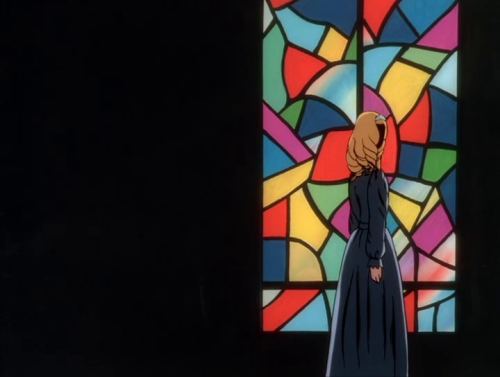
Slowly but surely, we start to see the shape of the castle Osamu Dezaki has built. Even though Miya-sama is deeply manipulative, her intense emotional purity drives her to be so. Even though Orihara is incredibly lively, it’s her paralyzing fear of death that drives her to be this way. Even though Asaka Rei has a great love of people, she keeps to herself to honor a promise.
While any other anime would be content to play out the drama between the three of these characters, Oniisama E is, from its very beginnings, more ambitious. No character is left unaffected by the plot, as Nanako’s parents, Fukiko’s older brother, and Nanako’s precious Oniisama all wind their threads into the twisted hierarchy of Seiran Academy. What begins as a schoolgirl drama plays out into much wider consequences.
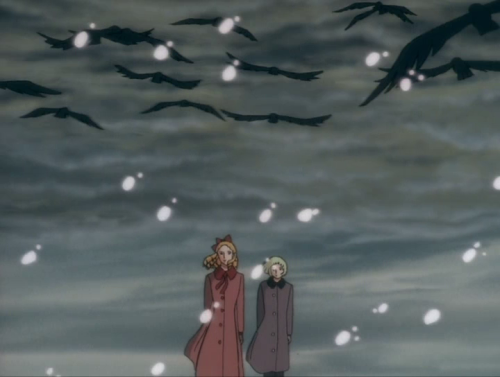
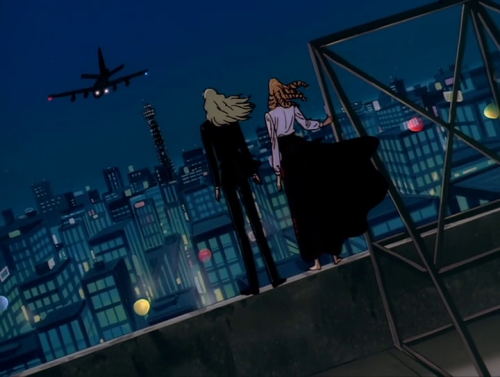
It’s hard to pinpoint a climactic moment in Oniisama E, but if there is one, it’s likely Rei and Fukiko’s rooftop scene. The two are revealed to be sisters – and revealed to have known this for quite some time – sisters who, when they were young, tried to commit a double suicide on a snowy beach. Fukiko slits Rei’s wrist, promising to ‘go after her’, but never does. After a confrontation about the incident, Fukiko climbs onto the ledge of a rooftop, offering, this time, to go first. The motivating factors are multitude for both Fukiko and Rei: a jilted lover, a secret told on a mother’s deathbed, pride and haughtiness and loyalty all swirling about.
The scene seems surreal at first, that such a proud, a well-to-do girl would consider killing herself, twice. But it all makes sense, given Fukiko’s character. A teenager’s sense of drama, and someone so proud allowing that to be compromised by feelings of love for someone who did feel the same. It isn’t right, but as we learn about Fukiko, we realize that the situation, and that she sees no alternatives, are the tragedy of her character. Even more tragic is Asaka Rei, out of a deep loyalty and love, who is a willing but regretful accomplice to both attempts.
Ultimately, it’s that sentiment that’s at the core of Oniisama E: each plot event is dictated by the characters in it, and there’s never an easy way to tell what was the motivating factor for these events: things are always a slow burn. A comment made offhandedly by Orihara Kaoru at the beginning of the series…
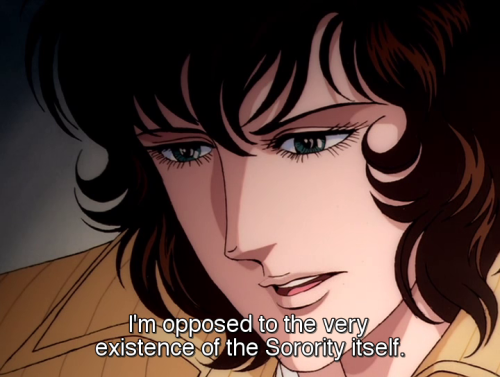
… eventually matures into a full-blown stand against Fukiko’s elite club; with petitions to the schoolboard and all. It doesn’t come out of nowhere. Orihara’s frustration with the club mounts as she sees it toy with Nanako for sport, limit Asaka Rei’s enjoyment of school life for twisted reasons, and generally cause vicious jealousy and discord within the student body.
Similarly, what’s provided as a small vignette at the very beginning of the first episode:
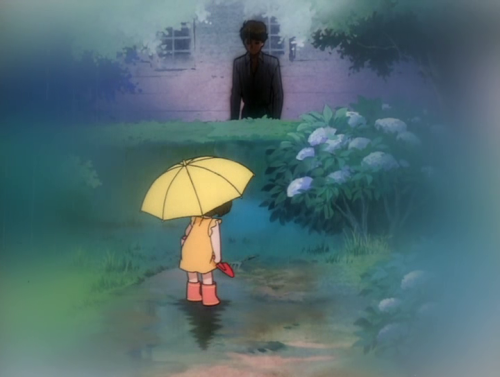
eventually becomes one of Oniisama E‘s most pivotal plot points. Director Osamu Dezaki shows his master hand with this one, slowly adding more detail to this shot as repeats from episode to episode. He animates it from the perspectives of multiple characters, provides more backstory, all woven in, seamlessly, until we realize the importance of those opening moments of the anime, what drove these two characters to be in this garden with a shovel, and behind that hedge, obscured. Nothing happens in Oniisama E without a reason, and who these characters are is almost always the reason.
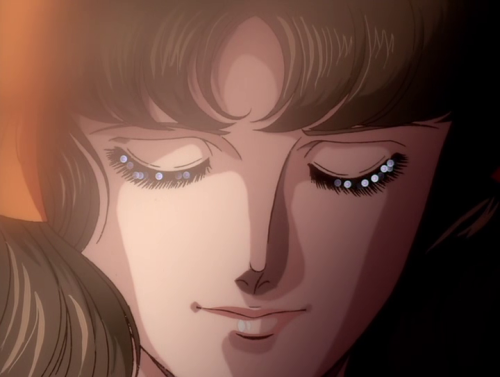
All of this is executed to almost surreal beauty. While I have no doubt that the long wait before an adaptation of Oniisama E into an anime in 1991 (after its original publish date in 1975) was at least partially due to content and subject matter, suicide and drug addiction not being the least of those subjects, the delay allowed Osamu Dezaki to produce one of his last major works. His visual style is at its height in Oniisama E, where he makes ample use of the video mixing techniques, as well as his trademark ‘postcard memories’ in a highly refined way. The animation is highly detailed; often spending the extra effort to animate individual strands of hair in detail, or the shimmer on a girls’ eye.
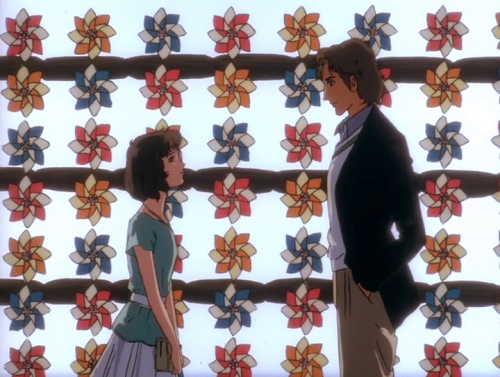
Depressing though it might seem, Oniisama E is a series I’ll remember as uplifting. Nanako’s continued relationship with her Oniisama never becomes the potentially illegal tryst you’d see in more recent anime. Takehito Henmei, her Oniisama, is genuinely a nice guy, who wants Nanako to be happy. Asaka Rei’s friendship with Orihara Kaoru is a surprisingly strong bond, born out of their mutual (futile?) struggles, and their airy natures. Ichinomiya Fukiko eventually softens in her pride, allowing viable human contact in.
For all the heartbreak Oniisama E presents its characters with, there are equal doses of genuine relationships forming and continuing throughout the series. Nothing Ikeda Riyoko presents her characters with is insurmountable; and ultimately, Oniisama E is a series about growth.
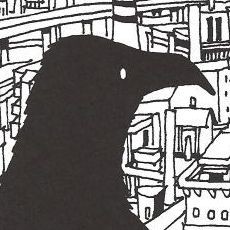
Leave a Reply